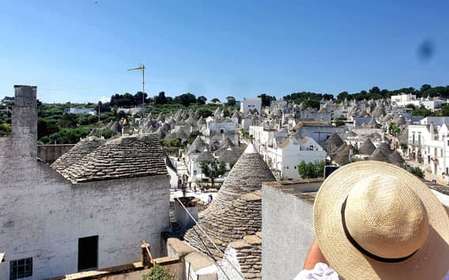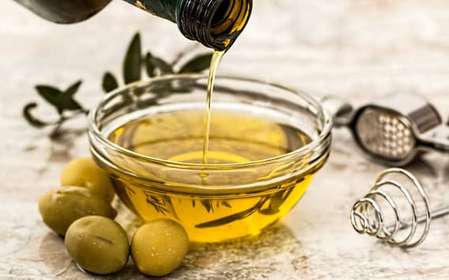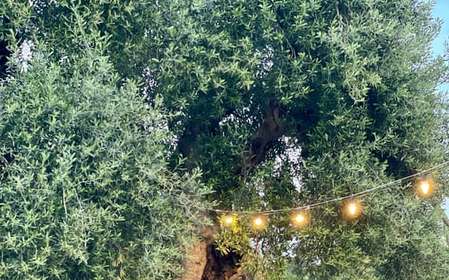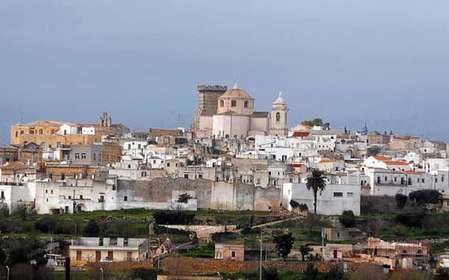- Home
- Useful Tips
- What to do in Brindisi during winter
Brindisi's winter charm often gets overlooked as travelers flock to Italy's snow-capped north. Yet this Adriatic port city transforms into a serene cultural haven between November and February, when 63% fewer tourists mean you'll have Baroque churches and Roman ruins virtually to yourself. The real struggle? Finding authentic experiences when most travel guides focus solely on summer beach trips. Locals know winter reveals Brindisi's true soul – from steamy bowls of 'ciceri e tria' in family-run trattorias to torchlit processions honoring Saint Nicholas. With average temperatures around 12°C, you'll need local insights to navigate the seasonal closures while discovering why this is when the city's maritime history and culinary traditions shine brightest.


How to stay warm while exploring Brindisi's historic center
The brisk scirocco winds whipping off the Adriatic can make wandering Brindisi's stone-paved centro storico surprisingly chilly. Smart travelers adopt the local winter rhythm: mornings are for museum hopping in the 13th-century Swabian Castle where Frederick II once held court, its thick stone walls retaining gentle warmth. Come afternoon, follow the aroma of roasting chestnuts to Piazza Duomo, where cafe owners roll out heat lamps for patrons sipping almond-infused caffè leccese. The secret? Pop into enotecas like Vineria Perrotti for a warming Negroamaro wine tasting – their cellar stays naturally cozy year-round. For the ultimate local hack, time your Roman Column visits for golden hour when the setting sun transforms the harbor into a windbreak.
Where to experience authentic Puglian winter traditions
Winter unlocks Brindisi's cultural calendar in ways summer visitors never witness. December brings the magical Presepe Vivente at Santa Maria del Casale, where locals reenact nativity scenes in the frescoed medieval church. Foodies should mark their calendars for January's Sagra della Pittula festival, when grandmothers fry dough ribbons in communal olive oil – join the queue early for these crispy delights drizzled with vincotto. Don't miss the nightly passeggiata along Lungomare Regina Margherita; even in winter, bundled-up families stroll past fishermen mending nets under floodlit palm trees. For deeper immersion, the tourist office offers free winter workshops teaching how to craft traditional pupe dei santi (saint dolls) from dried figs.
The truth about Brindisi's winter food scene
Contrary to assumptions, Brindisi's culinary scene thrives in winter with seasonal specialties you won't find in August. Trattoria Pantagruele keeps their wood-fired oven roaring for perfect pucce bread stuffed with slow-cooked wild boar. At Osteria La Locanda dei Mercanti, ask for the off-menu 'minestra maritata' – a hearty marriage of bitter greens and pork that locals swear wards off colds. The morning fish market near Monumento al Marinaio d'Italia still operates daily; arrive by 8am to watch chefs select the day's catch (look for purple-streaked torpedo fish, a winter delicacy). Budget tip: bakeries like Panificio Santa Rita sell warm pasticciotti custard tarts for €1.50 – the perfect handheld warmer during castle visits.
Day trips that shine brighter in winter months
Brindisi's strategic location makes it an ideal winter base for crowd-free Puglian adventures. The 40-minute train to Lecce reveals Baroque palaces dusted with frost, their limestone facades glowing against gray skies – January sees 80% fewer queues at the Basilica di Santa Croce. Wine lovers should head to the Cantina Due Palme cooperative; their winter 'vino novello' tastings include cellar tours without summer's sweaty crowds. For nature, the protected Torre Guaceto wetlands become a birder's paradise with migratory flamingos wintering in the brackish waters. Local guides offer off-season kayak tours when glassy waters perfectly reflect the medieval watchtowers. Pro tip: Weekday winter trains to these destinations often have €5 regional promotions.



